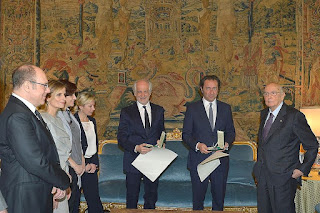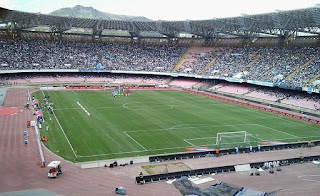NEW - Paolo Sorrentino - film director
Seventh Italian director to win Best Foreign Film at Oscars
The film director Paolo Sorrentino, whose 2013 movie La grande bellezza won the Academy Award for Best Foreign Film, was born on this day in 1970 in Naples. The award put him in the company of Federico Fellini and Vittorio De Sica in landing the Oscar for Best Foreign Film, a prize that has been won by only seven Italian directors in the history of the Academy Awards. Fellini scooped the honour four times and De Sica twice. The other successful Italian directors are Elio Petri, Giuseppe Tornatore, Gabriele Salvatores and Roberto Benigni. La grande bellezza - released for English-speaking audiences as The Great Beauty - was the first Italian winner since Benigni’s Life is Beautiful was named as Best Foreign Film in 1998. Sorrentino’s 2021 semi-autobiographical movie The Hand of God - È stata la mano di Dio in Italian - was nominated for an Oscar but missed out to the Japanese drama Drive My Car. Lauded for combining an expansive visual style with a sensitivity for psychological subtleties in his films, Sorrentino was born in the Arenella district of Naples, a relatively prosperous neighbourhood atop the Vomero hill. Read more…
____________________________________
Tintoretto – painter
Dyer’s son whose work still adorns Venice
Renaissance artist Tintoretto died on this day in 1594 in Venice. Known for his boundless energy, the painter was also sometimes referred to as Il Furioso. His paintings are populated by muscular figures, make bold use of perspective and feature the colours typical of the Venetian school. Tintoretto was an expert at depicting crowd scenes and mythological subjects and during his successful career received important commissions to produce paintings for the Scuola Grande di San Marco and the Scuolo Grande di San Rocco. Tintoretto was born Jacopo Comin, the son of a dyer (tintore), which earned him the nickname Tintoretto, meaning 'little dyer'. He was also sometimes known as Jacopo Robusti as his father had defended the gates of Padua against imperial troops in a way that was described as ‘robust’ at the time. As a child, Tintoretto daubed on his father’s walls so the dyer took him to the studio of Titian to see if he could be trained as an artist. Things did not work out and Tintoretto was quickly sent home. Read more…
___________________________________
Andrew Grima - royal jeweller
Rome-born craftsman favoured by the Queen of England
The jewellery designer Andrew Grima, whose clients included the British Royal Family, was born on this day in 1921 in Rome. Grima, whose flamboyant use of dramatically large, rough-cut stones and brilliant innovative designs revolutionised modern British jewellery, achieved an enviable status among his contemporaries. After the Duke of Edinburgh had given the Queen a brooch of carved rubies and diamonds designed by Grima as a gift, he was awarded a Royal Warrant and rapidly became the jeweller of choice for London’s high society, as well as celebrities and film stars from around the world. He won 13 De Beers Diamonds International Awards, which is more than any other jeweller, and examples of his work are kept by the Victoria and Albert Museum and the Worshipful Company of Goldsmiths. When a private collection of Grima pieces was sold at auction by Bonhams in London in September 2017, some 93 lots realised a total of more than £7.6 million (€8.6m), with one pear-shaped blue diamond alone making £2.685m (€3.034m). Grima’s father, John Grima, was the Maltese owner of a large international lace-making business. Read more…
_____________________________________
Angelo Moriondo - espresso machine pioneer
Bar and hotel owner invented way to make coffee faster
Angelo Moriondo, the man credited with inventing the world’s first espresso coffee machine, died on this day in 1914 in Marentino, a town in Piedmont, about 20km (12 miles) east of Turin. Moriondo, who was 62 when he passed away, was the owner of the Grand-Hotel Ligure in Turin’s Piazza Carlo Felice and the American Bar in the former Galleria Nazionale on Via Roma. He came up with the idea of a coffee machine essentially in the hope of gaining an edge over his competition at a time when coffee was a hugely popular beverage across Europe and in Italy in particular, but which still depended on brewing methods that required the customer to wait five minutes or more to be able to raise a cup to his mouth. Moriondo figured that if he could find a way to make multiple cups of coffee simultaneously he would be able to serve more customers more quickly. He hoped that word would then get round in Turin’s commercial district that his bars were the ones to go if the pressures of business did not allow time for leisurely breaks. He never contemplated industrial-scale production of his invention, his ambitions never extending beyond the needs of his own businesses. Read more…




.jpg)


.jpg)

.jpg)



.jpg)


